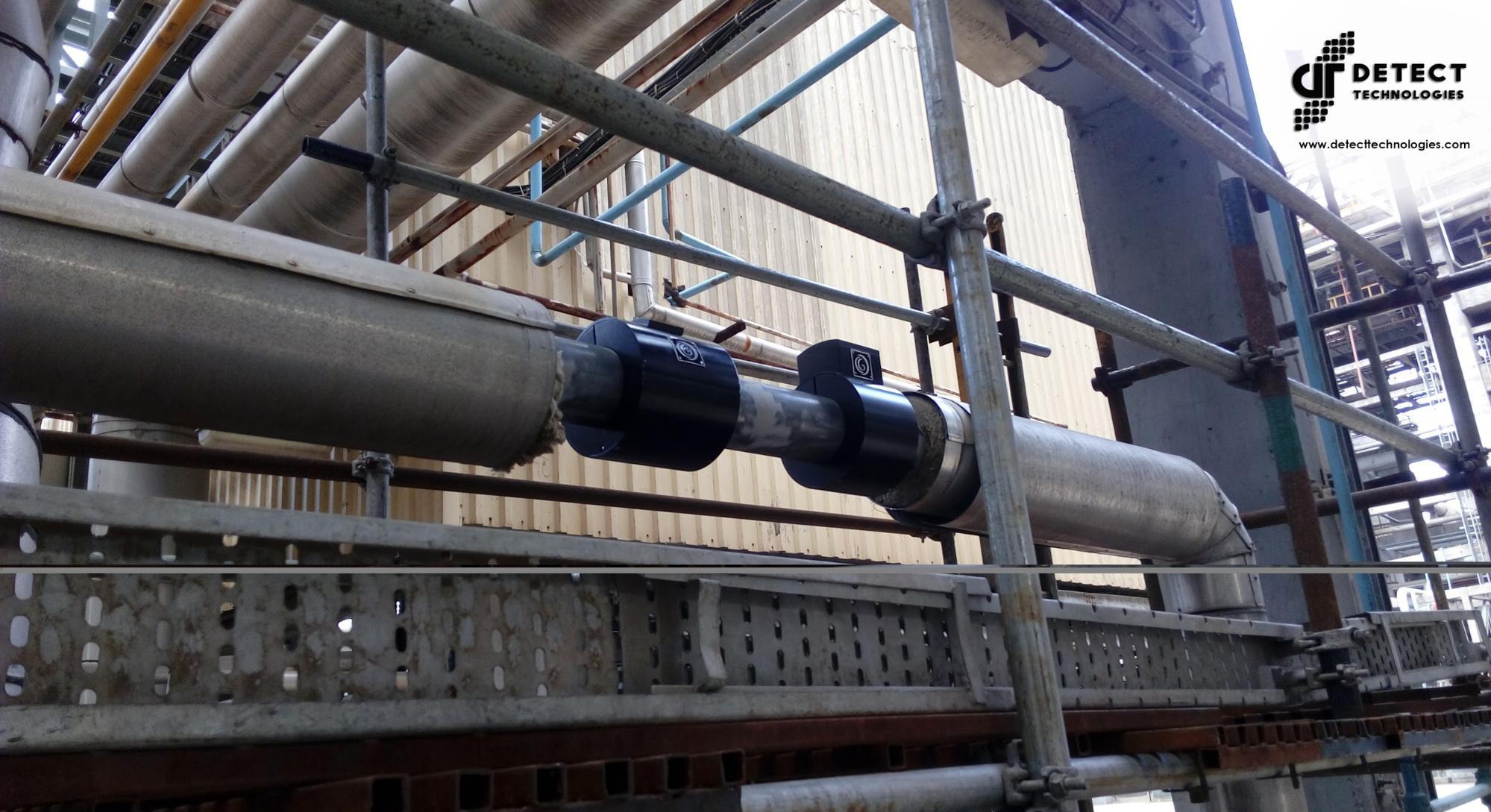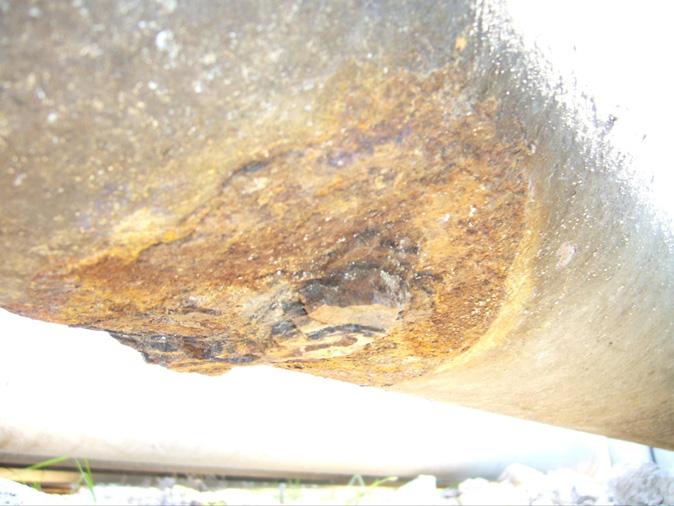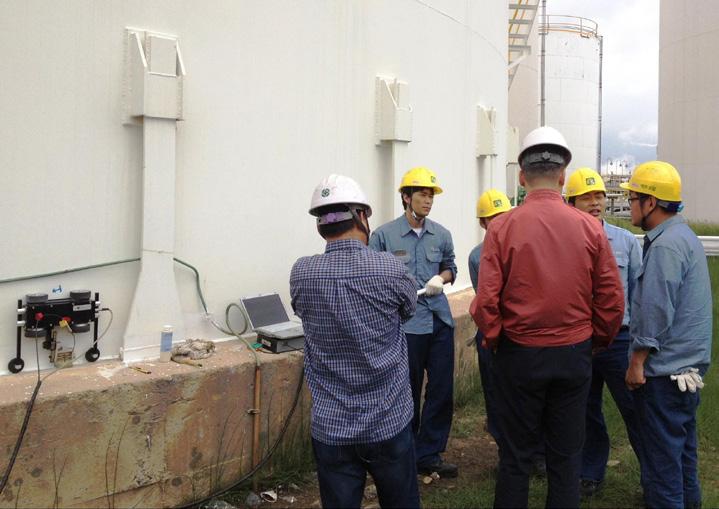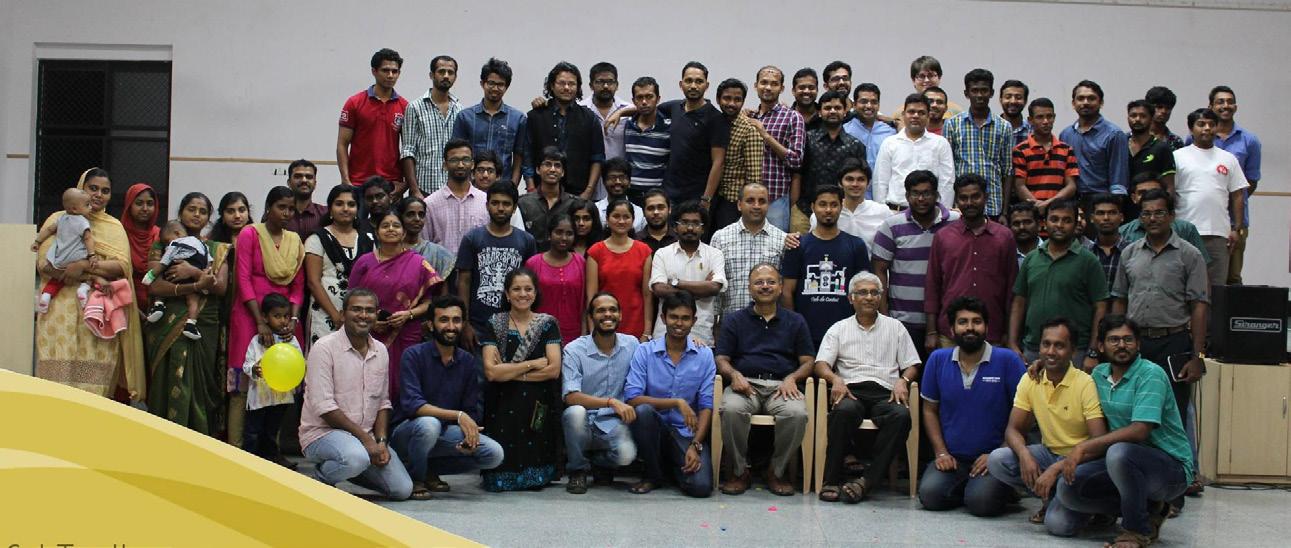
6 minute read
Drumming Out Defects
from Immerse 2018
by Sharmila Balamurugan
Advertisement
We have used non-invasive techniques in the medical industry for a long time. For instance, we use ultrasound to monitor the health of our internal organs. In this article, we see how scientists now use ultrasonic waves to non-invasively probe mechanical structures for defects.
Mechanical Engineering
Sensational news about structural disasters seldom inform us of their slow and almost invisible causes. However, several catastrophic incidents share quite a humble and prosaic beginning.
In 1842, one axle snapping in a 16-carriage train led to the loss of at least 50 lives in Versailles, while a single crack in the wheel of a high speed train led to the death of 101 passengers in Eschede in 1998. A crack in one of the six support structures of a Norwegian oil rig lead to its capsizing, killing roughly 200 workers in 1980. And one leaky pipe in Bhopal in 1984 caused one of the worst industrial disasters mankind has seen. Flood caused by a molasses tank collapse in Boston in 1919, and De Havilland Comet plane crash in 1954 are some of the catastrophes that stem from a cause which you can hardly perceive and which grows so slowly, but just as steadily.
Catastrophes can start as, or be caused by, something as small as a crack in a huge engineering structure. As the adage goes “all for the want of a horseshoe nail”, industries across the globe lose about 2-3% of their GDP to corrosion in their metal structures. To prevent loss of lives and resources, regular maintenance is mandatory. But maintenance necessitates shutting down of entire processes and factories. This spurs the need to find an optimum frequency of invasive inspection, and to develop noninvasive monitoring techniques to prevent loss of productivity. Moreover, in the case of large engineering structures such as railway lines, nuclear reactors, and cross-country oil pipelines, searching for possible cracks in their metallic structures is like searching for a needle in a haystack. Or rather, like searching for an unknown number of needles in several haystacks, says Prof Krishnan Balasubramaniam, of the Department of Mechanical Engineering at IIT Madras.
The professor tells us that in the year 2009 alone, the southern railways of India recorded finding as many as 2000 fissures in their railway lines. A fissure in a railway line is a complete perpendicular crack along its width. Even if only one in every hundred fissures has the potential to develop into a fracture that can cause damage, there is a significant risk factor that we are posed with. A proposed solution for structural health monitoring is occasional inspection with the help of electronic sensors. This generates a large amount of data, which can be processed using methods like deep learning to give an indication of the health of structures.
Prof Balasubramaniam heads the Center for Nondestructive Evaluation (CNDE) at IIT Madras, which has done pioneering work in this field. Prof Balasubramaniam has worked for more than 25 years in this field, and is at the helm of several startups, that have been incubated by IIT Madras, to work with industries to manage the risk of catastrophic failures. Two of these are Dhvani Research (www.dhvani-research.com) and DeTect Technologies (www.detecttechnologies.com), that work on building probes for detecting structural defects, especially in hostile environments.
Corrosion is one of the leading factors affecting the health of structures. Prof Balasubramaniam explains that corrosion needs three important ingredients, namely, the metal which gets corroded, water mixed with just enough minerals to catalyse the process, and oxygen. For example, every street light support structure is likely to suffer corrosion at the point where it comes in contact with the ground. The life of this structure can be prolonged by strengthening the base with a layer of concrete, which prevents the metal structure from getting in contact with water.
But things are not so simple when it comes to larger structures and buildings. Corrosion can happen in regions which may not be visible or easily detectable. Hidden corrosion is like a disease that eats away the strength of a structure. Therefore, timely diagnosis helps in

Example of corrosion in a pipe
helps in mending the structure, and is done using several kinds of probes. Prof Balasubramaniam’s team works on probes that use acoustic signals and thermal imaging. He gives us an apposite analogy: similar to a doctor listening to a patient’s heartbeat to detect abnormalities, sensors use acoustic probes to detect abnormalities in reflected sounds, or do thermal imaging which is quite like using a thermometer. Ultrasound and X-ray imaging is just as prevalent and useful in structural health monitoring as in diagnostics.
Prof Balasubramaniam’s lab and startups use “guided” ultrasonic waves to detect corrosion. Guided waves (as the name suggests) are waves that propagate in a structure such that they are guided by its boundaries. Fiber optic cables are a well known example, carrying guided light waves. Hence, it is obvious that any structural defects will be reflected in the ultrasonic waves that are guided by the structure. In this manner, devices that monitor the transmitted waves can pick up signs of these defects.
With experience, one is able to gain information about the approximate size and severity of the defect. To automate and standardize such analyses, the teams are building near-real time modelling to gain information about these defects from the transmitted ultrasonic waves. They make use of inverse models which try to reconstruct these defects from the recorded data. Monitoring devices that work with low frequency guided waves are developed by DeTect Technologies to check for large defects over extended areas. The device is permanently installed and is used as a continual health monitoring system, which regularly records data of the entire structure.
Devices with high frequency guided waves are used by Dhvani Research to check for corrosion and small defects. A drawback of finer measurements is that this can monitor only over local regions. This technique is used during inspection. With extensive use of robotics, regions which are quite inaccessible to us are also examined. Prof Balasubramaniam recounts an example of how the technology developed in his lab and used by Dhvani Research checks for structural defects in the base of oil tanks. He tells us that conventional methods for this purpose require emptying the entire tank and long shutdown periods, resulting in heavy expenditure. Their technology, on the other hand, checks the base for cracks from the outside of the structure, without disrupting the functioning of the facility.
Industry-level robustness with extremely low possibilities of false triggers have become the guiding mantra for these startups. DeTect Technologies was chosen by Economic Times as the Best on campus in Startup awards. The technology that the research team at IIT Madras has developed, and which the startups have perfected, is now being used in around 12 countries, mostly in oil and gas industries. Prof Balasubramaniam points out that this success was possible only because the startups put in gruelling effort to get the robustness and perfection required in industry over the idea proposed by the research team. He tells us that in research and in the industry, it is very important to get one’s hands dirty and feet wet in the field, literally.
Non-destructive evaluation of the base of an oil tank

Sharmila Balamurugan (Author) Sharmila is a research scholar who works in the area of quantum dynamics in the Department of Physics. She loves to read and write, especially when there is a stock of sinfully rich snacks kept beside her.
Prof. Krishnan Balasubramaniam is a Chair Professor in the Department of Mechanical Engineering. His research interests are ultrasonics and acoustics, structural health monitoring, micro and nano imaging, nondestructive evaluation, materials characterisation, and wave propagation. He also heads the Centre for Non-Destructive Evaluation (CNDE) at IIT Madras.

Prof Balasubramaniam, his collaborators, and students of CNDE










